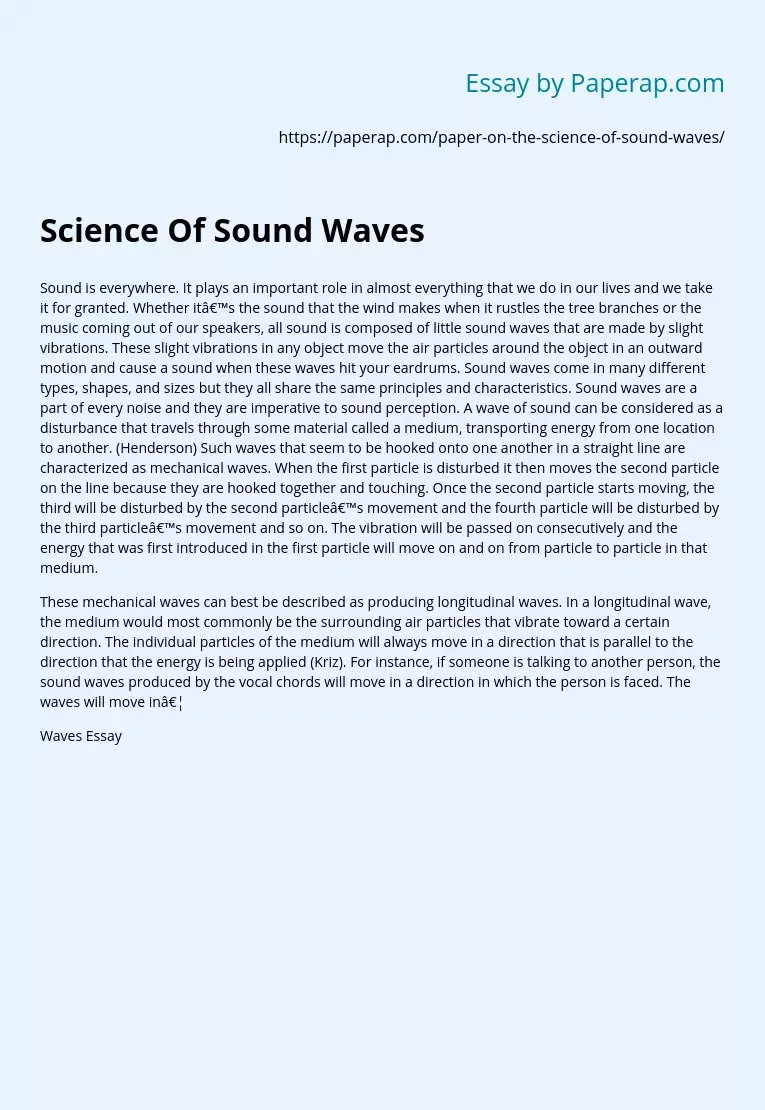What do we know about sound waves?
Sound is everywhere. He plays an important role in almost everything that we make a role in our lives, and we take it for granted. Whether it’s the sound that the wind makes when it rustles the branches of trees, or the music coming from our speakers, all sound is made up of small sound waves that make up light vibrations. These light vibrations in any object move air particles around the object as they move and cause sound when these waves hit your eardrums.
Sound waves come in different types, shapes and sizes, but they all share the same principles and characteristics. Sound waves are part of all noise and are essential for the perception of sound. A sound wave can be thought of as a disturbance that propagates through some material called a medium, transferring energy from one place to another (Henderson). Such waves, which appear to be interlocked with each other in a straight line, are characterized as mechanical waves.
When the first particle is disturbed, it then moves the second particle along the line because they are linked together and touching. The third part will be outraged by the movement of the second part.
Vibration will be transmitted to the part, and energy to be injected into the first part of the medium. The third part will be outraged by the movement of the second part. Vibration will be transmitted to the part, and energy to be injected into the first part of the medium. The third part will be disturbed by the movement of the second part. Vibration will be transmitted to the part, and energy to be injected into the first part of the medium.
These mechanical waves are best described as producing longitudinal waves. In a longitudinal wave, the medium is most often the particles of the ambient air, which vibrate in a certain direction. Individual particles of the medium will always move in a parallel direction of energy (crisis). For example, if someone is talking to another person, the sound waves produced by the vocal cords will move in the direction that the person is looking. The waves will come …
What do we know about sound waves?. (2019, Dec 05). Retrieved from https://paperap.com/paper-on-the-science-of-sound-waves/

